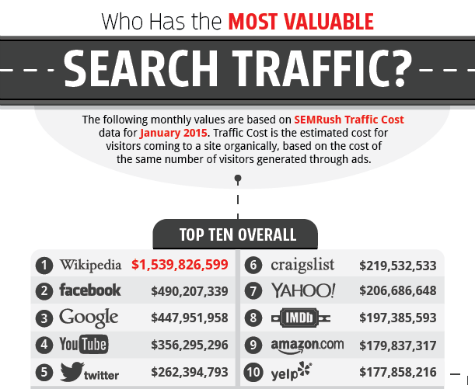Visual content is king, but what happens if you don’t have a massive library of brand images to use for your online content? Do you try a simple Google image search and grab something that might be approved for commercial use? Or, do you simply go image-less and rely on your copy to carry the weight?
If you’re pillaging images from Google’s regular search, stop right now. Google might tell you that it’s approved for commercial use, but there are other resources that provide greater assurances (and more relief for your legal team).
In this post I’ll show you where to find (truly) free stock images, and how to use those images for the best visual impact on your content marketing.
Strong Stock Image Sources
What comes to mind when you think of stock images? Does your brain turn to generic illustrations with the words “content” and “ROI” in them? Those are some forms of stock images, but they usually don’t inspire readers to peruse the content.
This Buffer post outlines over 50 different sites that provide free stock images, and I’ve frequently used the following in my work:
 Pixabay: A database of over 320,000 free stock images, many are photos submitted by users without attribution requirements or copyrights. No registration is required, though you’ll need to fill out a Captcha to download images.
Pixabay: A database of over 320,000 free stock images, many are photos submitted by users without attribution requirements or copyrights. No registration is required, though you’ll need to fill out a Captcha to download images.- New Old Stock: If you’re looking for something more vintage, this database offers archival photos are no longer under copyright protections.
- Public Domain Pictures: The title says it all – these are photos uploaded by amateur photographers within the public domain. These are free to use for personal and commercial options, without attribution.
Know the License
While public domain photos are free to use, you may come across some images that have a Creative Commons (CC) license. This service is provided for non-copyrighted users to place certain restrictions on repurposing of their content, and each license requires specific levels of attribution. Make sure you know if there is a CC license with an image, and attribute any reposts appropriately.
If you ever have doubt about the original source of an image, use the free TinEye reverse image search tool to check if it’s been used on other websites (with or without attribution).
Stock Images Can Be Powerful
You don’t need to sacrifice authenticity and emotion with stock images. Many of the resources above specialize in captivating photography that expresses specific feelings. These emotions can help give context to your content.
When looking for an image to use with your content, keep these thoughts in mind:
- Will it supplement and enhance the message? If the image doesn’t mesh with the overall content message, it creates a disconnect for the reader. For example, a lively piece of generic clip art looks disjointed when placed with a blog post about serious data security issues.
- Can it be repurposed in social? Your content message extends beyond the web site, and so should your imagery. But if your chosen image is inconveniently cropped in social, that message is lost.
- Is it already being widely used? This is where our TinEye tool comes back into play. If your stock image has already been widely embedded in other posts, it becomes less unique for your content.
When in Doubt, Create it Yourself
If the wide selection of stock images fails to produce good options, you can always try creating something yourself. Thankfully, you don’t need a degree in computer science and a Photoshop license to create compelling visual content.
Here are some free tools that allow marketers to create unique, shareable images from stock materials:
- Canva: An online designing application that uses a simple drag-and-drop interface to build custom designs.
- Pixlr: An online image editor that contains several Photoshop-like functions, including layers, filters and masks.
- GIMP: A desktop graphic design program that functions as a free Photoshop alternative. There is a learning curve with GIMP (especially for those who are already trained in Photoshop), but you aren’t limited to specific templates.





